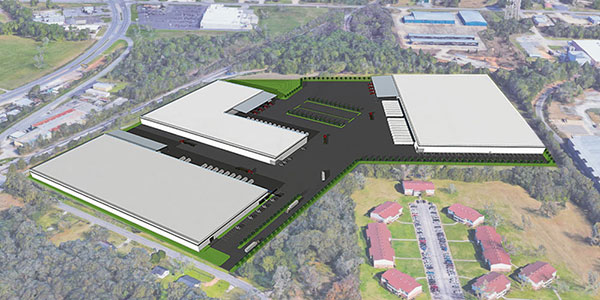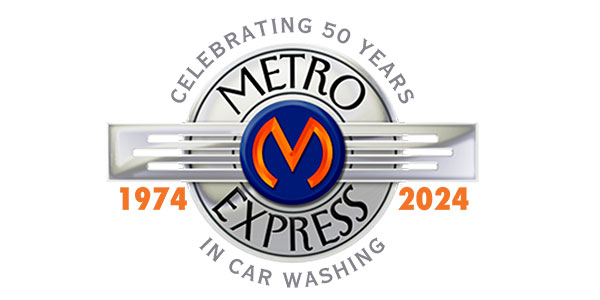Customers want to leave a carwash with smiles on their faces and cars luminously shining. A clean, dry car is often the final touch in achieving this level of customer satisfaction. In addition to a sparkling finish, customers expect their vehicles to be properly dried to help avoid water droplets that lead to bothersome spots on freshly washed cars.
Having a high-quality dryer is critical to ensuring high-quality results.
Evaluating dryer types
According to Archie Johnson, owner of The Dryer Pros, two basic types of dryers are available in the market: high-pressure and low-pressure dryers. “[A] high-pressure [dryer allows] a greater distance between its discharge nozzles and the vehicle’s surfaces; discharge nozzles on low-pressure dryers need to be closer to wet surfaces to maximize impact,” explains Johnson.
Moreover, Darryl and Cheryl Dobie, owners of Aerodry Systems LLC, and their team report that although ductwork dryers may be visually different, the air is produced by variations of only a few kinds of fans. “In order to be effective, each type of fan requires a specific delivery system. Frequently, we find interesting versions of hoses, nozzles and blades extending from air producers with the hopes of removing water from vehicles — and many times, nearly the same amount of water remains on those vehicles upon exit,” they say.
The Dobies and their team offer the following factors to keep in mind:
- Axial fans: Air passes through the fan parallel to the driveshaft. An axial-flow fan is suitable for a larger flow rate (CFM) with a relatively small pressure fan. The effective progress of the air is straight through the impeller at a constant distance from the axis. These fans are widely used for providing the required airflow in heat and mass transfer operations.
- Centrifugal fans: Often called “squirrel cage” fans, they operate on the principle of “throwing” the air away from the blade tips. The air is led through the inlet pipe to the center of the impeller, which forces the air radially (making a right angle turn) outward to the volute from which it flows into the discharge pipe. The fan blades can be forward curved, straight or backward curved (inclined). A centrifugal fan has a comparatively smaller flow rate with a larger pressure rise. Because of this pressure rise, the likelihood of stress fractures and failures is increased.
- Regenerative blower: Although uncommon in the U.S., a regenerative blower is similar to a centrifugal blower. For the size of the fan blade, it does produce a high amount of pressure; however, the CFMs are extremely low. A combination of pressure and volume (CFM) is required to move liquid. A much higher volume is required for the air to travel the distance to the vehicle surface with enough force to strip the water (velocity). Additionally, the air stream is very narrow (because it does not have the volume) so the coverage area is minimal. A regenerative blower is best-suited when the airflow is in a contained environment — i.e., air compressor hose, vacuum (reverse), electronic cooling, etc.
Regardless of the type, Johnson asserts, dryers should have enough surface impact to strip away standing water and enough air volume to evaporate as much of the remaining moisture as possible.
Choosing the right dryer
“The first thing an operator must ask is how dry he [or she] wants to get [the] customer’s vehicles,” shares Johnson. “[Carwashes] shouldn’t expect to get vehicles 100 percent dry because no dryer system is capable of that. Generally, the degree of drying is proportional to the size and complexity of a dryer system.”
The size of a drying system can be determined by the line space available for the dryer components and electrical load capability of the carwash facility, continues Johnson.
Owners and operators must also consider the type of wash to select the best dryer for their locations’ unique needs. Full-service carwashes are labor-intensive, which greatly affects bottom line profits, notes Johnson; and multi-profit centers, like vacuums, can get backed up if customers spend extra time to remove excess water left by a marginal dryer system. “Either way, excessive water left on customers’ vehicles can cost carwash operators money,” he adds.
Additionally, Aerodry Systems’ team asserts, an express wash will require larger systems because the pace is fast and towel drying is not offered. The company continues that a full-service wash typically has a slightly slower line speed, and a small amount of moisture needs to be left on the vehicle so the hand towels glide and buff the surface.
Furthermore, a solve-all dryer that can perfectly fit the needs of a specific wash type and/or frequency does not exist in the market. “[Since] a variety of vehicles enter the wash each day, choose equipment [that] has the greatest positive impact on the largest number of vehicles at your wash,” asserts the Dobies and their company. “This [market] is not one-size-fits-all.”
The dryer company continues by offering a few key factors to consider when selecting a dryer:
- Speed: Whether projected or from experience, base the number of vehicles serviced on speed as opposed to the average number of cars per hour/day. As a starting point, use the 1:1 ratio of cars per hour (CPH) to horsepower (HP).
- Climate and geography: A humid environment or a wash situated where prevailing wind distributes mist into the drying area will require more consideration as to size and air volume of a system to mitigate those factors.
- Water quality: More HP will be needed to remove water that is not treated properly. Assisting the process by establishing a beading of water is vital because beads weigh less, have less surface tension and, therefore, are easier for the drying system to remove.
- Sound: Balancing sound restrictions with performance is possible. Know your requirements before making a decision, and ask your manufacturer to document his or her specifications with certified reports. Installing a system without meeting requirements imposed by code may result in operational restrictions.
- Cost: Spending hard-earned money can be painful, but if you base your decisions solely on cost, the chances of adequately addressing needs are minimal.
- Network: Research door options by talking to other operators with similar facilities. Also, ask prospective vendors for references.
Maintaining productivity
Because dryers have few moving parts, they can easily be ignored, says Johnson. “However, some of the moving parts they have can fail if not maintained, resulting in major expenses.”
The most critical component of a dryer system is the air producer(s), continues Johnson. “Impellers should be checked on a regular basis for debris in the vanes, which causes them to become out of balance,” advises Johnson. “Out of balance impellers can cause motor bearing failure or, more [critical], the impeller can explode, causing excessive damage or personal injury.”
Most manufacturers supply owner manuals with their dryers, explains Johnson, which can safeguard from unnecessary expenses if followed.
If a drying system contains moving parts (oscillating outlets operated by air cylinders or electronic eyes), informs the Dobies and their team, special attention must be paid. The company recommends checking the air lines for leaks and the eyes for cleanliness often.
Looking ahead
Although performance and efficiency, (i.e., energy considerations) have improved over the years, notes Johnson, many dryer factors are considered standard and remain mostly static in the industry.
“The basic components of drying systems have remained constant over the years,” states Cheryl Dobie. “However, sound control is increasingly important for customers, employees and neighboring properties. In the future, these concerns will continue to grow, increasing the need for balance between product safety and performance.”
However, looking ahead, this balance might not be so far out of reach. “There is no question that more improvements in performance [enhancements] and energy efficiency are coming,” asserts Johnson.
Sidebar: Preventative maintenance
Daily tasks
- Remove debris from dryer.
- Evaluate air intake.
- Review control panel for proper motor function.
Quarterly tasks
- A qualified electrician should check all electrical connections; tighten as needed.
- Check all component assembly connections; secure as needed.
Additional maintenance that may arise
- Adjust direction of airflow.
- Loosen clamp on rubber nozzle; adjust angle; tighten clamp
- If more adjustment is necessary, remove bolts on fiberglass; adjust to net slot in fiberglass; and replace bolts.
- Replace rubber nozzles.
- Follow the same steps as above using any spare parts from inventory.
Information for this sidebar was provided by Aerodry Systems LLC.














